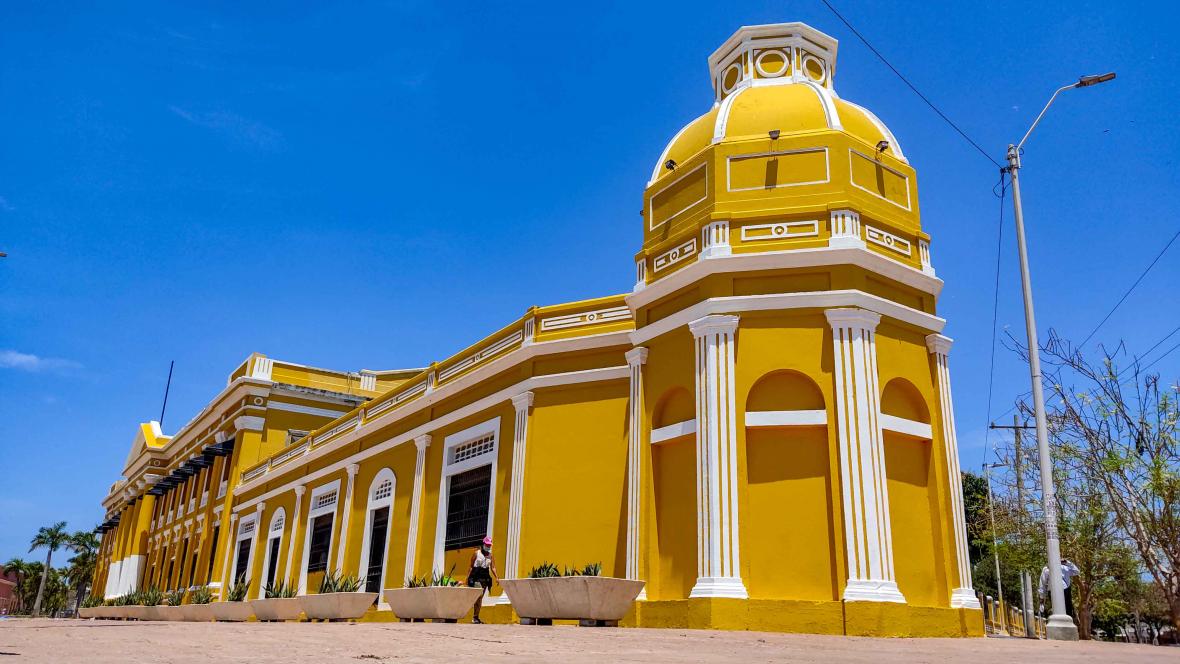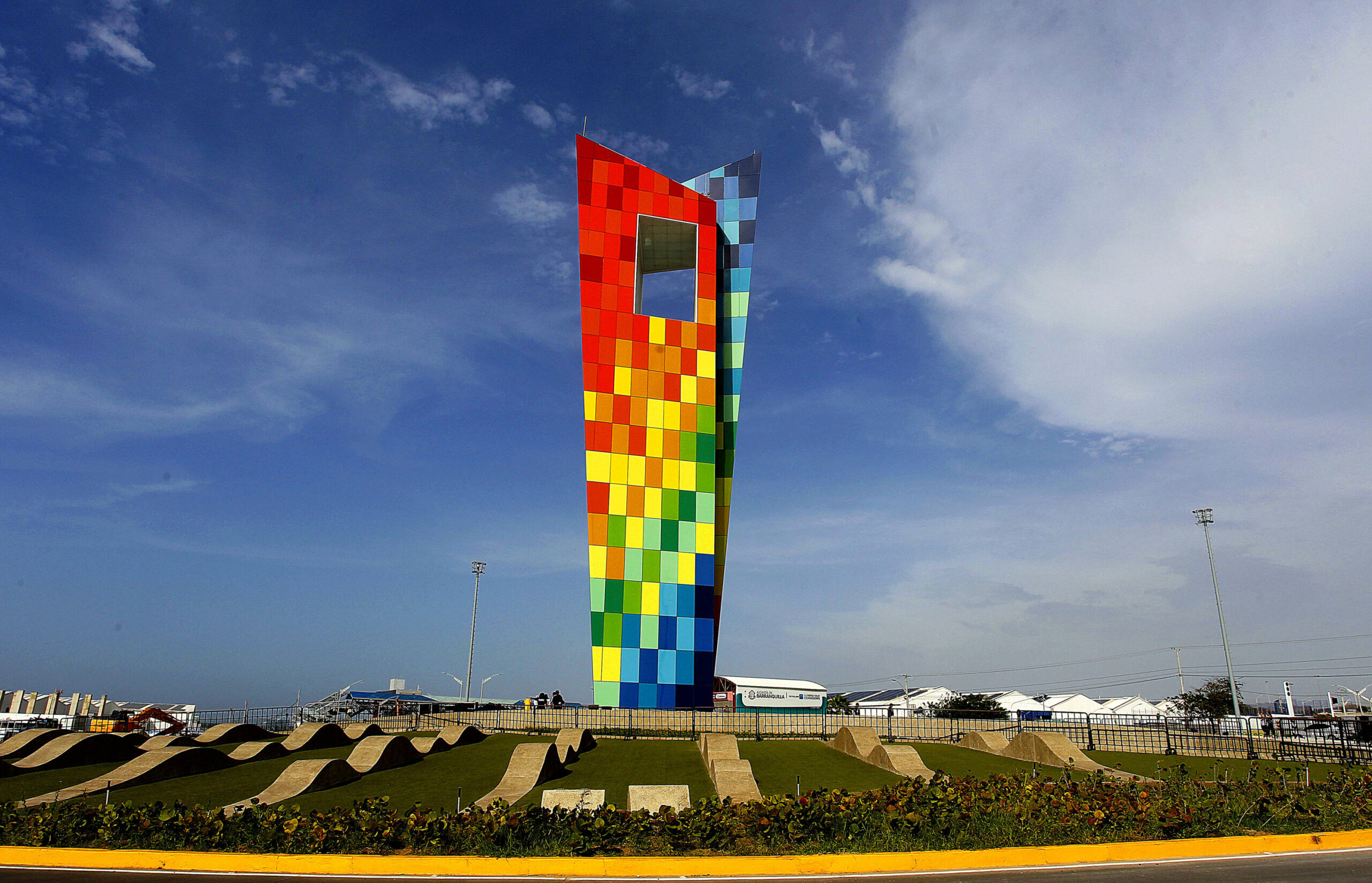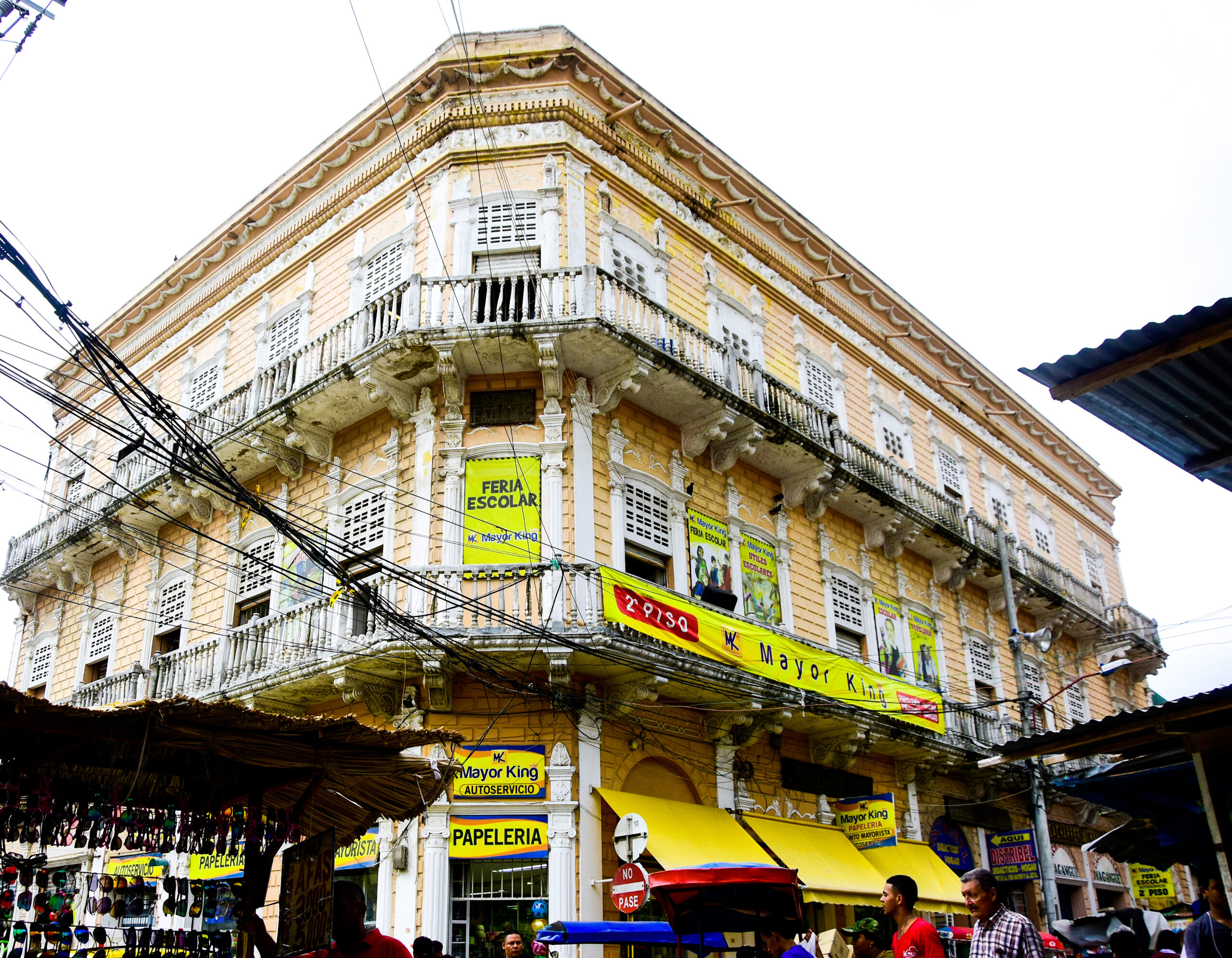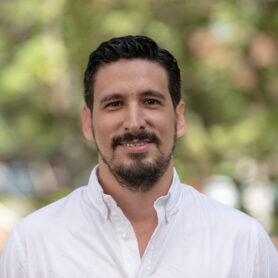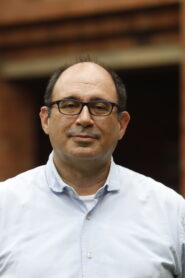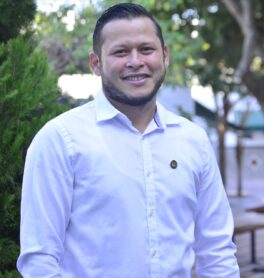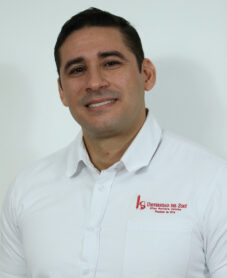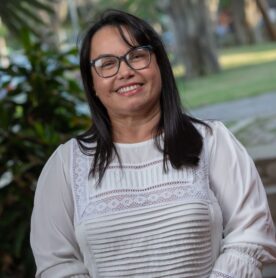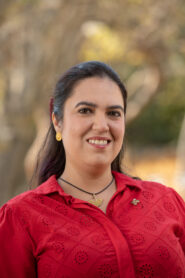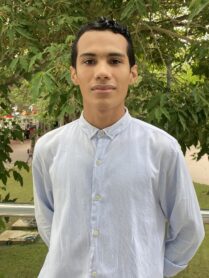WELCOME TO C3 2023!
IEEE Colombian Caribbean Conference (C3) is the Biannual Technical and Scientific Conference of the IEEE Colombian Caribbean Section, that brings together IEEE professionals and scientists from Colombia and Latinamerica. The 2023 edition of this IEEE international event will be held in the Universidad del Norte at Barranquilla, Colombia. C3 2023 is an opportunity for professional members, academics, researchers, and industrialists to meet and present the developments and technological advances. IEEE C3 2023 will be held in person and virtual on November 22-25 2023. Barranquilla, Colombia.
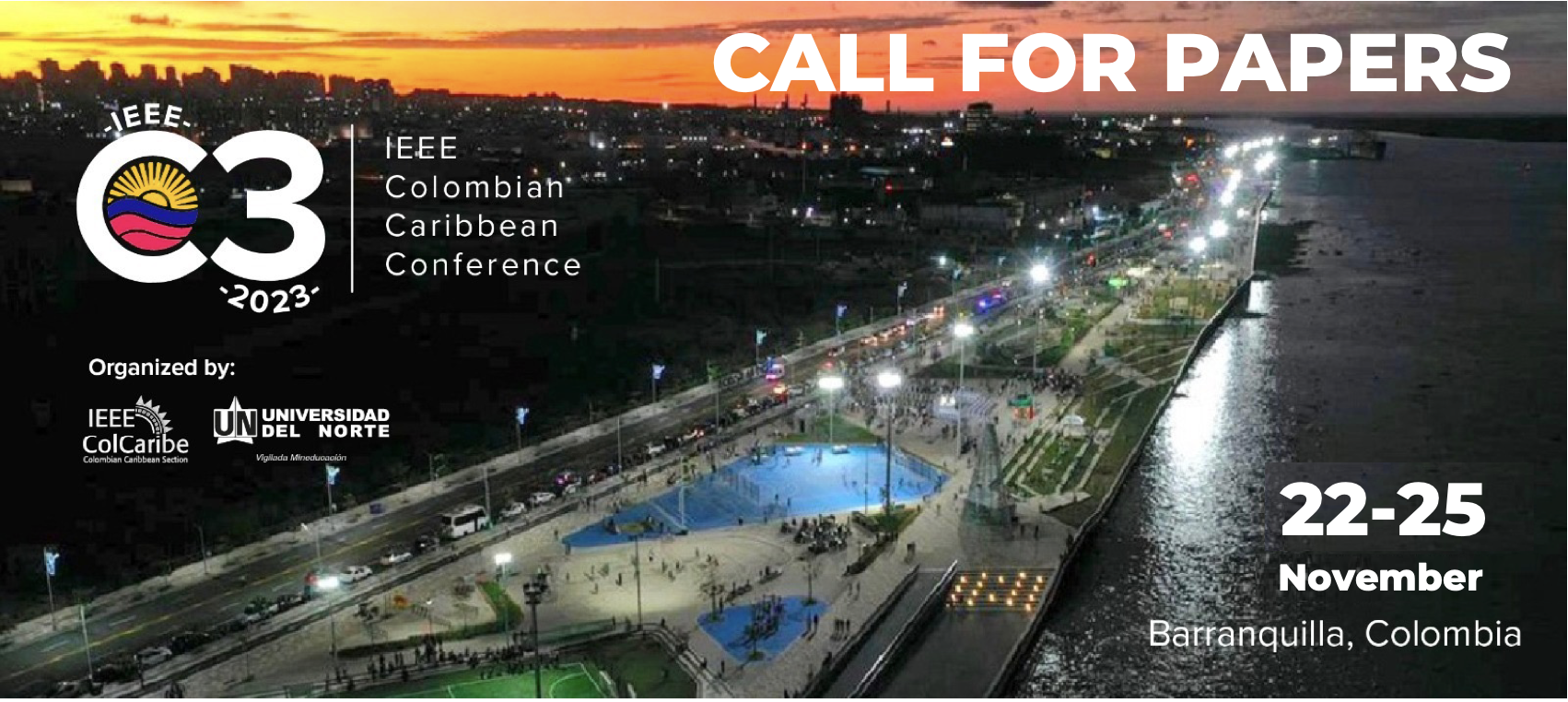
Call for Papers 2023
We are pleased to announce the 2023 edition of the Biannual International IEEE Colombian Caribbean Conference (C3) 2023, organized by the IEEE Colombian Caribbean Section. IEEE C3 offers a unique opportunity for academics, practitioners, researchers and industrialists to present their developments and technological advances in person, during the months of October and November 2023 at the Universidad del Norte, Barranquilla, Colombia.
Both IEEE members and non-members are invited to participate in the call for publications, covering theoretical and practical topics in areas such as:
- Circuit and systems
- Communications
- Computer
- Computational Intelligence
- Educational
- Engineering in Medicine and Biology
- Geoscience and Remote Sensing.
- Power and Energy
- Robotics and Automation Systems
- Technology and Engineering Management
We look forward to receiving a wide variety of high quality contributions from around the world, and we are excited to present this opportunity to foster technological development in our Colombian Caribbean region. We look forward to your participation in C3 2023!
Accepted and presented papers in IEEE C3 will have the possibility of being selected to submit an extended version in Transactions on Energy Systems and Engineering Applications, Scopus Indexed.
Paper Submission
Submit your best work to IEEE C3 2023 and share your technological advances with the community! To participate, send your paper in digital format (PDF) through the submission portal, in English, and in IEEE conference format. Remember that the maximum length is six (6) pages, including illustrations and references. In addition, each article must be original and be correctly labeled with its subject area. The papers accepted and presented at the conference will be included in the IEEE Xplore Digital Library.
Our review committee will ensure that each article submitted is rigorously reviewed through a double-blind process.
Authors must submit their work without including information that would reveal their identity. If your paper is accepted, at least one of the authors must register and present their paper during the conference. Don’tmiss this opportunity to stand out as a leader in your field and share your knowledge and progress with others – download our IEEE templates in Microsoft Word or Overleaf and submit your paper today!
Submit your paper in: https://easychair.org/conferences/?conf=ieeec3
For more information, you can contact:
César Viloria Núñez, IEEE C3 General Chair: caviloria@uninorte.edu.co
Ingrid Oliveros, IEEE C3 Technical Chair: inoliver@uninorte.edu.co
IMPORTANT DATES
DEADLINE EXTENDED
Paper Submission Deadline: July 26, 2023 August 26th, 2023
Notification of Acceptance: August 26, 2023 September 22th, 2023
Submission of final versions: September 26, 2023 October 13th,2023
Conference: November 22-25, 2023
FUNDACIÓN UNIVERSIDAD DEL NORTE
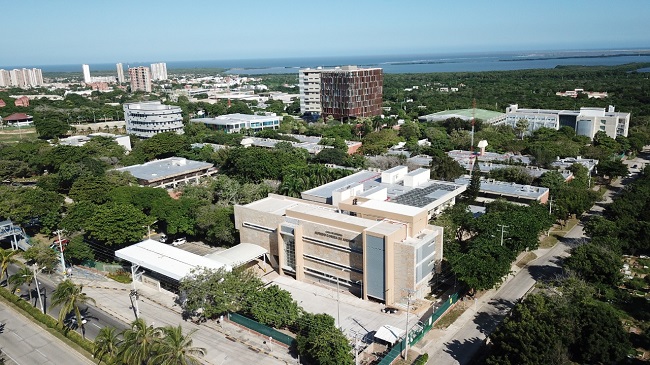
The Fundación Universidad del Norte, in accordance with the principles, values and objectives that have guided it since its creation, has as its mission the integral formation of the person in terms of higher education, and the contribution, through its institutional presence in the community, to the harmonious development of society and the country, especially the Colombian Caribbean Region.
The Foundation fulfills this university work both in the undergraduate modality and in advanced training, its work being characterized by a broad social and humanistic content, and by the emphasis on scientific and investigative foundations to respond to the requirements of the progress of science and to the social needs of the region and the country.
The Institution seeks to train its students as thinking, analytical people with solid ethical principles, who conceive innovative ideas in order to participate in an active, enterprising, responsible, honest, critical and pragmatic way in the process of social, economic, political development. and culture of the community.
The University tends because the training that is imparted in it is carried out with suitable, qualified teachers with a deep academic vocation. To support them in this task, it is determined to have the most appropriate and advanced teaching, research and extension methods of contemporary higher education. In this sense, science, technology, the humanities and the arts will continue to be the distinctive institutional axes for student training.
Present in the life of the community through the exercise of its academic functions (teaching, research, extension and services to the external sector), Universidad del Norte ensures that its directors, professors, students and alumni remain in permanent study, analysis and research of the concrete problems of the community in which they find themselves.
Our institution is committed from its origins, in the present and into the future, with all dimensions of social, economic, political, environmental and cultural development, with social responsibility, maintaining its proper place of insertion in society, which is the academic.
BARRANQUILLA, COLOMBIA
Barranquilla, officially the Special, Industrial and Port District of Barranquilla, is the capital of the department of Atlántico, Colombia. It is located on the western bank of the Magdalena River, 7.5 km from its mouth in the Caribbean Sea. In 1993 it was constitutionally organized in a special, industrial and port district.9 It is the main economic center of the Caribbean region of Colombia, among the economic activities commerce and industry stand out.
The establishment of the city dates back to the third decade of the 17th century, when the sectors surrounding the Magdalena River began to be populated around grants granted by the Spanish Crown. During the time of Independence, Barranquilla distinguished itself for the support of its inhabitants for the independence cause, which earned it the status of a town in 1813. In the second half of the 19th century, it acquired strategic and economic importance when steam navigation began. by the Magdalena River, which allowed it to become the country’s main export center until the first half of the 20th century.
From the end of the 19th century until the 1930s, Barranquilla was the main point of entry into Colombia for thousands of immigrants and advances such as aviation, commercial radio and telephony, as well as various sports.
Barranquilla’s population is 1,274,250 people, making it the fourth most populous city in the country behind Bogotá, Medellín and Cali. The city is the nucleus of the Metropolitan Area of Barranquilla, which is also made up of the municipalities of Soledad, Malambo, Galapa and Puerto Colombia. The conglomerate is home to 2,199,507 inhabitants, and also occupies the fourth position among the country’s conurbations.3 As the departmental capital, Barranquilla is the seat of the Government of the Atlantic, the Departmental Assembly and the Superior Court of the Atlantic, the highest judicial body from the Department.
Barranquilla is home to one of the most important folk and cultural festivities in Colombia, the Barranquilla Carnival, declared Cultural Heritage of the Nation by the Colombian Congress in 2001 and Oral and Intangible Heritage of Humanity by UNESCO in 2003.1112 The city was designated the American Capital of Culture in 2013, host of the 2018 Central American and Caribbean Games, and hosts the 2027 Pan American Games.
From the end of the 19th century until the 1930s, Barranquilla was the main point of entry into Colombia for thousands of immigrants and advances such as aviation, commercial radio and telephony, as well as various sports.
Barranquilla’s population is 1,274,250 people, making it the fourth most populous city in the country behind Bogotá, Medellín and Cali. The city is the nucleus of the Metropolitan Area of Barranquilla, which is also made up of the municipalities of Soledad, Malambo, Galapa and Puerto Colombia. The conglomerate is home to 2,199,507 inhabitants, and also occupies the fourth position among the country’s conurbations.3 As the departmental capital, Barranquilla is the seat of the Government of the Atlantic, the Departmental Assembly and the Superior Court of the Atlantic, the highest judicial body from the Department.
Barranquilla is home to one of the most important folk and cultural festivities in Colombia, the Barranquilla Carnival, declared Cultural Heritage of the Nation by the Colombian Congress in 2001 and Oral and Intangible Heritage of Humanity by UNESCO in 2003.1112 The city was designated the American Capital of Culture in 2013, host of the 2018 Central American and Caribbean Games, and hosts the 2027 Pan American Games.
BEFORE TRAVELLING
VISAS
Citizens of some countries need to present a tourist visa that must be processed at Colombian embassies or consulates abroad. In the following link you can verify if you require a visa or not.
Check the countries that require a visa at https://www.cancilleria.gov.co/tramites_servicios/visa/requisitos.
Likewise, review Resolution 1128 of 2019: https://www.cancilleria.gov.co/sites/default/files/resolucion_1128_de_2018.pdf.
For more information about arriving to Colombia visit Colombia Travel Information site
RECOMMENDATIONS
November 22th
| Time | Room 1 | Room 2 | Room 3 |
|---|---|---|---|
| 9:30-11:30 | Tutorial 2: Competitive Intelligence Ignacio Castillo 21G1 | Tutorial 4: Energy Markets Raquel Ronderos 55G1 | |
| 12:30-14:30 | TIME FOR LUNCH ON YOUR OWN | ||
| 15:30-17:30 | Tutorials 1: Micro and nano electronics Ricardo Reis 21G1 | Tutorial 3: Data Analytics Karina Rodríguez 55G1 | Tutorial 5: Programming air quality with Python Juan Sebastián Sánchez-Gómez 24G1 |
November 23th
| Time | Room 1 | Room 2 | Room 3 | Room 4 | Room 5 | Room 6 |
|---|---|---|---|---|---|---|
| 8:00-8:30 | Registration |
|||||
| 8:30-9:30 | Opening | |||||
| 9:30-10:20 | Digital trends for clean and electric mobility Ravikiran Annaswamy 13G2 |
|||||
| 10:20-10:40 | COFFEE BREAK | |||||
| 10:40-11:30 | How to feed a growing population while conserving the planet’s resources – IoT to the Rescue Víctor Grimblat 13G2 |
|||||
| 11:30-12:20 | Data Science for Cybersecurity: An Overview Focused on Networking Michelle Nogueira 13G2 |
|||||
| 12:20-14:00 | TIME FOR LUNCH ON YOUR OWN | |||||
| 14:00-14:50 | Panel: Smart Cities perspectives in Latinamerican María Isabel Mejía, Mónica Huerto and Virna Camppanela Moderator: Alejandra Orellana 13G2 |
|||||
| 14:50-15:30 | CASS BENEFITS Ricardo Reis 13G2 |
|||||
| 15:30-16:30 | 13G2 | 35G2 | 24G1 | 32G2 | CEC4 | 22G1 |
| 177 | 201V | 196 | 48V | 36 | 16 | |
| 158 | 1V | 222 | 50V | 221 | 32 | |
| 247 | 19V | 149 | 178V | 121 | 228V | |
| 16:30-16:50 | COFFEE BREAK | |||||
| 16:50-18:30 | 13G2 | 35G2 | 24G1 | 32G2 | CEC4 | 22G1 |
| 237 | 108 | 200 | 5V | 238V | 98 | |
| 114 | 122 | 208 | 20V | 55 | 102 | |
| 7 | 197 | 19 | 128V | 60 | 57 | |
| 21 | 6V | 33 | 129V | 111 | 68 | |
| 15 | 183V | 130V | 239 | 17V | ||
| 18:30-20:30 | Networking Cocktail and Poster Session | |||||
November 24th
| Time | Room 1 | Room 2 | Room 3 | Room 4 | Room 5 | Room 6 |
|---|---|---|---|---|---|---|
| 8:00-8:30 | Registration | |||||
| 8:30-9:30 | Technical aspects to consider in the energy transition Andres Yabrudi 13G2 |
|||||
| 9:30-10:00 | Integration of renewables and new energy markets Jovanio Santos 13G2 |
|||||
| 10:10-10:30 | COFFE BREAK | |||||
| 10:30-12:30 | 13G2 | 12G2 | 37G2 | 34G2 | 35G2 | CEC4 |
| 22 | 252V | 174 | 132V | 142V | 166 | |
| 23 | 136V | 168 | 150V | 144V | 11 | |
| 43 | 103V | 171 | 203V | 167V | 58 | |
| 199 | 228V | 226 | 74V | 8V | ||
| 78 | 153V | 206V | 191V | |||
| 205V | 30V | 66V | ||||
| 12.30-14:00 | TIME FOR LUNCH ON YOUR OWN | |||||
| 14:00-14:50 | Panel: Energy Transision in Latinamerican Diana Perez, Jessica Guevara and Jovanio Santos Moderator: Ingrid Oliveros 13G2 |
|||||
| 14:50-16:30 | 13G2 | 12G2 | 36G2 | 34G2 | 35G2 | CEC4 |
| 140 | 69 | 80V | 159 | 246V | 71 | |
| 61 | 70 | 118 | 107 | 97V | 99 | |
| 63 | 9 | 163 | 127 | 187V | 62 | |
| 180 | 217V | 207 | 117 | 95V | 104V | |
| 234 | 215V | 146 | 18 | 194V | 126V | |
| 16:30-16:50 | COFFEE BREAK | |||||
| 16:50-18:30 | 13G2 | 12G2 | 36G2 | 34G2 | 35G2 | CEC4 |
| 37 | 91 | 211 | 26V | 51 | 202 | |
| 38 | 175 | 35 | 77V | 210 | 134 | |
| 40 | 195 | 151 | 28V | 235 | 14 | |
| 41 | 212 | 73 | 29V | 182V | 89 | |
| 42 | 39 | 75 | 244V | 227V | 198 | |
| 20:00-24:00 | Social Integration | |||||
November 25th
| Time | Room 1 | Room 2 | Room 3 | Room 4 | Room 5 | Room 6 |
|---|---|---|---|---|---|---|
| 8:00-8:30 | Registration | |||||
| 8.30-9:30 | AgroTech: Past, Present and Future Mónica Huerta 13G2 |
|||||
| 9:30-10:10 | Digital trends for the diagnosis of cognitive impairment pathologies Andrés Navarro 13G2 |
|||||
| 10:10-10:30 | COFFEE BREAK | |||||
| 10:30-12:30 | 13G2 | 16J | I213 | CEC1 | 11J | 32J |
| 81 | 25 | 220 | 179V | 105 | 232 | |
| 84 | 131 | 230 | 185V | 120 | 255 | |
| 87 | 86V | 251 | 254V | 214 | 253 | |
| 93 | 141 | 209 | 243V | 155 | 165 | |
| 112 | 162 | 248 | 156V | 169 | 88 | |
| 133 | 192 | 250 | 184 | |||
| 12:30-13:30 | Closure | |||||
Papers list
| Paper number | Title | Track |
|---|---|---|
| 1 | Low-Computational-Load Real-time Path Planning and Trajectory Control based on Artificial Potential Fields | RAS |
| 5 | Adaptive protection proposal to interconnect isolated microgrid to main electric grid: Case study of Pedernales province | PES |
| 6 | Site-adaptation of Global Horizontal Irradiance applying Machine-learning techniques in Coastal Regions of Ecuador | Geoscience |
| 7 | Implementation of Broyden's Method to Compute the Three-Phase Power Flow in Electrical Distribution Networks with Asymmetric Loading | PES |
| 8 | Pneumonia Detection in Lung Ultrasound Images with Texture Analysis and Machine Learning | EMBS |
| 9 | Vulnerability assessment based on the Octave Cybersecurity Framework for Industry 4. | TEMS |
| 11 | Literature Review: Latency Compensation Techniques for Online Gaming under an IoT Approach | Communications |
| 14 | Power Supplies and Measurement Circuits for a DC Analysis Remote Laboratory | Education |
| 15 | Thermal Behavior Forecast Modelling in Overhead Transmission Lines using ARIMA models | PES |
| 16 | Trends and Changes In Academic Research Contributions From The Top Iberoamerican Countries: The Engineering and Computer Sciences Cases | TEMS |
| 17 | Boards and cyber risk: A grieving process for executives and board members? | TEMS |
| 18 | Approximate modeling of dynamical systems applying HAVOK: A systematic review | RAS |
| 19 | User Equipment Power Consumption Analysis for Configurable Bandwidth Part (BWP) in a 5G Network | Communications |
| 20 | A Battery Energy Storage System as an Alternative for Mitigating Issues in the Distribution Network | PES |
| 21 | Exploring the Gasification of Lenga Chips (Nothofagus pumilio) in a Fixed Bed System for Rural Area Implementation | PES |
| 22 | A pragmatic methodology to evaluate the configuration for a double busbar substation in an electrical grid | PES |
| 23 | Towards a resilient power grid: Framework to identify, evaluate, and manage high impact events in the Colombian electrical system | PES |
| 25 | Design, Manufacturing, and Validation of a Conductivity Sensor for Precision Agriculture | CAS |
| 26 | Optimized Surface Algorithm for Mining Applications Implemented in a GPU | RAS |
| 28 | Feature Scaling for Multi-objective Optimization Applied to Solving the Inverse Kinematics of Redundant Robot Manipulators | RAS |
| 29 | Digital Fabrication of Bio-Inspired Robotic Modular Systems based on Biomechanics of Inching-Locomotion Caterpillars | RAS |
| 30 | CONCEPTUAL DESIGN OF A BATTERY STORAGE SYSTEM FOR AQUASOL FLOATING SOLAR PLANT - PILOT RESEARCH PROJECT | PES |
| 32 | Economic Feasibility of the Operation of a Sanitary Landfill for Compliance with the SDGs | TEMS |
| 33 | RPL Routing Metrics for 5G Networks: Sistematic Review in IIoT | Communications |
| 35 | Deep Learning-Based Ocular Disease Classification in Fundus Images | EMBS |
| 36 | An AHP-TOPSIS based approach for food selection: a case study of chorizo varieties in Santa Marta, Colombia | Computer |
| 37 | Metering Aggregation in the Context of Full Opening of Power Markets: A Case Study | PES |
| 38 | Capacity Markets in Times of Energy Transition: A Cross-Border Energy Analysis Integration using the Political Dimension of the Full Potential Energy Resources Assessment | PES |
| 39 | Preparation of the Information Security Management System Implementation Based on the NTC-ISO-IEC 27001:2013 Standard at the IUB University Institution | TEMS |
| 40 | Market Design Proposition of a Hybrid Power Plant Aggregation Agent in an Energy Transition Context | PES |
| 41 | Enhancing Technical and Economic Signals in Power Market Desing in Times of Energy Transition: A proposal for Brazilian Capacity Auction | PES |
| 42 | Novel Technological Solution for Metering Aggregation in the Context of Full Opening of Power Markets | PES |
| 43 | Variability of the cost of operating the system due to the intermittency of renewable generation | PES |
| 48 | Analysis of Induced Voltages on the Sheath of Single-Circuit Underground Power Lines - Part I: Without Phases Transposition | PES |
| 50 | Analysis of Induced Voltages on the Sheath of Single-Circuit Underground Power Lines - Part II: With Phases Transposition | PES |
| 51 | Comparison of machine learning path loss model for wireless sensor networks in cassava crops | Computer |
| 55 | Technological prototype with artificial intelligence for military security in river environments | CIS |
| 56 | Interval Multi-objective Optimization Approach for Sizing and Location of Distributed Generation | PES |
| 57 | Leveraging Electronic Healthcare Records Based on ISO/EN 13606 for Enhanced Telemedicine in Rural Colombia | TEMS |
| 58 | Integration of Wireless Sensor Networks and IoT for air quality monitoring. | Communications |
| 60 | An Improved Architecture for Automatic People Counting in Public Transport using Deep Learning | CIS |
| 61 | Student research group as a research- based in application of renewable energy. | PES |
| 62 | Decision Making Model for Home Energy Saving through Artificial Intelligence applied to a HEMS | CIS |
| 63 | Stochastic Economic Power Dispatch Problem Based on ARMA-Analogs Wind Power Scenarios | PES |
| 66 | Development of a laboratory-scale solid-state fermentation bioreactor prototype for the biodegradation of pre-treated polypropylene | EMBS |
| 68 | TechLean: Value-added model for process optimization and automation | TEMS |
| 69 | Plant design for productive improvement through Systematic Layout Planning and simulation of discrete events in a construction materials company | TEMS |
| 70 | Use dashboards to support decision making in operations management | TEMS |
| 71 | The role of 3D data in CNN-based object detection | CIS |
| 72 | Solving Inverse Kinematics of a 3-DOF Rehabilitation Robot Using Groebner Basis | RAS |
| 73 | Classification of Hand Movements Using Electromyographic Signals and Machine Learning Models | EMBS |
| 74 | Demand Side Management Strategies for the Introduction of Electric Vehicles: A Case Study | PES |
| 75 | Design of a CNN1D for Control and Monitoring of Blood Pressure | EMBS |
| 77 | Experimental Evaluation of a Lightweight and Backdrivable Powered Knee Prosthesis for Transfemoral Amputees | RAS |
| 78 | Design of a Containerized Microgrid for Electricity Supply in Colombian Non-Interconnected Zones | PES |
| 80 | Quantifying the Complexity of Mental Stress during Academic Exams Using Wearable Skin Conductance Signals. | EMBS |
| 81 | Evaluation of the Impact of Underbuilt Wire on Backflashover Critical Current in Transmission Line | PES |
| 84 | Actions for the implementation of local flexibility services in the Colombian power sector | PES |
| 86 | Design and construction of a respirometer to evaluate the biorremediation of beach soils contaminated by oil to Aspergillus fumigatus and crab shell residues | CAS |
| 87 | Characterizing Demand Curves Using the Cluster Technique-A Case Study From Ecuador | PES |
| 88 | ASOLARPF: A Fast Methodology for Solar Penetration Power Flow Analysis | PES |
| 89 | A Pilot Study to Assess the Effects of Guided Voice-Synthesized Mindfulness Meditation on University Students through EEG Measurement | Education |
| 91 | Comparison of the Effectiveness of Moringa oleifera Seed Powder and Solution as Natural Coagulants in Wastewater Treatment. | TEMS |
| 93 | Use of radiators for cooling photovoltaic cells to enhance the performance of a photovoltaic panel | PES |
| 95 | Engineering in education, with an impact on the implementation of Agtech in the agricultural sector | Education |
| 97 | INTEGRATION OF THE POWERLOGIC™ ION7400 TO THE PLC LABORATORY TO THE ELECTROPNEUMATICS MODULE OF THE UNIVERSIDAD POLITECNICA SALESIANA ´ ECUADOR | Education |
| 98 | Technological advances for estimating and reducing gasoline evaporation losses in the Petroleum industry | TEMS |
| 99 | Empirical evaluation of automated code generation for mobile applications by AI tools | CIS |
| 102 | Tiktok activity analysis using data capture tools for networks traffic | TEMS |
| 103 | Development and deployment of a device to accurately measure and transmit precision agriculture data in the context of cultivating roses | TEMS |
| 104 | Estimation of discharge voltage in lithium-ion batteries (LIB) | CIS |
| 105 | Generative AI: The key for everyday problems. A comparison proposal for new users | CIS |
| 107 | Upper limb Exoskeletons for Motor Rehabilitation using Virtual Reality: A Technological Review | RAS |
| 108 | Analysis of the Thermal Sensation in the Veracruz-Boca del Río Region during Solar Cycle 24 from the Correlation of Variables from Solar Cycle 23 | Geoscience |
| 111 | Technology Surveillance on the Use of Chatbots: An Innovative Review | CIS |
| 112 | Assessing the PV Hosting Capacity of a Colombian Urban MV Network | PES |
| 114 | Depelovment of an Efficient Method to Calculate the Electric Field Produced by Power Transmission Lines Considering the Buckling of their Conductors and the Change of Trayectory of the Lines | PES |
| 116 | BRAIN TUMOR DETECTION USING CNN | CIS |
| 117 | Fuzzy Neuro Control For The Displacement Of A Swarm Of Robots In The Robotarium Environment | RAS |
| 118 | Electro-Stimulator for Limbs Strength Enhancement: An Innovative and Technological Review | EMBS |
| 119 | Modeling of a lithium-ion battery used in a photovoltaic system in sub-Saharan Africa | PES |
| 120 | Use of Deep Learning using the YOLOv5 and YOLOv8 models to estimate traffic sign recognition efficiency | CIS |
| 121 | Membrane Electrode Assembly Selection for a Lab Scale Anion Exchange Electrolyzer: Mathematical Modeling and Comparison | Computer |
| 122 | Enhancing Water Security in La Guajira, Colombia, through Atmospheric Water Harvesting | Geoscience |
| 126 | Comparison of classical machine learning and ensemble techniques in the context of dengue severity prediction | CIS |
| 127 | Direct calculation of the jacobian matrix: Leveraging Dual Numbers in Robot Forward Kinematics | RAS |
| 128 | Computational Fluid Dynamics modelling to simulate the thermal and fluid-dynamic behavior of a solar chimney dryer | PES |
| 129 | Theoretical and experimental assessment of solar greenhouse dryer for coffee beans. Case study for the district of Lalaquiz (Huancabamba, Piura, Peru) | PES |
| 130 | A comparative energy analysis of natural convection and forced convection in a solar greenhouse coffee dehydrator | PES |
| 131 | Predictive control applied to the operation of a dust collector in the drying process of pozzolan | CAS |
| 132 | Improvement proposal for the biomass feeding system of the bubbling fluidized bed gasifier at Universidad de Piura | PES |
| 133 | Latest Advancements in Carbon Nanotube (CNT) Applications for Enhancing the Mechanical and Electrical Properties in PEMFC Components | PES |
| 134 | AntennaEDU: a novel approach for teaching and learning antenna design | Education |
| 136 | Fluidized-bed dryer prototype for arabica coffee beans: sizing and performance testing | TEMS |
| 139 | Intelligent Lighting System Based on PWM Signal, Light Detection, and Motion Sensing | CAS |
| 140 | Integrated Energy Consumption Management through a Low-Cost Device | PES |
| 141 | Wearable System for the Acquisition of Ground Reaction Forces for Control of Semi-Active Prostheses | CAS |
| 142 | Hand Motor Imagery Identification Using Machine Learning Approaches in a Protocol Based on Visual and Passive Movement | EMBS |
| 144 | Effects on Cortical Rhythms Produced by Robotic Glove Assistance during Motor Imagery | EMBS |
| 146 | Deep Regression of Signed Distance Maps for Corneal Endothelium Image Segmentation | EMBS |
| 149 | An Innovative Laboratory Experience to Develop Power Engineering Skills in a Power Systems Course | Education |
| 150 | Quantification of the benefits of Smart Grids to decarbonize the Colombian electricity system | PES |
| 151 | NEUROBOX: An Open-Source Suite for the Flow Control of EEG Experiments | EMBS |
| 152 | Design and Characterization of the Hibiscus Antenna for 21 cm Cosmic Hydrogen Signal Detection | Communications |
| 153 | Numerical study of the intermittent dehydration of banana slices in a tray dryer | TEMS |
| 155 | Intelligent Exposure Time Determination with Structured Light for Accurate 3D Object Reconstruction | CIS |
| 156 | Implementation of Water-Filling algorithm for optimal power allocation in the wireless channel of a MIMO 2x2 system over SDR | Communications |
| 158 | The Importance of Modeling Operational Constraints in Combined-Cycle Units to Support Energy Transition | PES |
| 159 | Design and Characterization of a Soft Robotic Wrist Brace for Pediatric Rehabilitation | RAS |
| 162 | Design of an electronic prototype for monitoring soil nutritions in crops of cocoa | CAS |
| 163 | A Novel Prediction Method for Glaucoma Detection Using Retinographies | EMBS |
| 165 | An Assessment of Shielding Failure Rates in Transmission Lines A Comparative Analysis EGM and the LPM | PES |
| 166 | Kinect v2 and Orbbec Astra Pro Cameras for Gait Analysis a Preliminary Comparison | Communications |
| 167 | Mechatronics Design and Bio-Motion Simulation of Trans-radial Arm Prosthesis Controlled by EMG Signals | EMBS |
| 168 | Detection of Online Sexism Using Lexical Features and Transformer | CIS |
| 169 | Dual Optical Design for VIS-NIR Classification based on Single Pixel and Diffractive Cameras | CIS |
| 171 | RealCheck: A Web Application for Fake News Detection Using Natural Language Processing | CIS |
| 173 | Maqya: Design of an autonomous low cost beach-cleaner for endanger beaches | RAS |
| 174 | Analysis and prediction of PM2.5 in Medellin based on seasonal time series | CIS |
| 175 | Prioritization of ICT investment projects to reduce the digital divide in the Colombian Caribbean Region. | TEMS |
| 177 | Impact of Underbuilt Wire Position on Transmission Line Performance | PES |
| 178 | Multi-objective optimization of power substation grounding grids | PES |
| 179 | Design and Simulation of a low cost star-type antenna operating at 28.75 GHz | Communications |
| 180 | Design and Construction of a Low-Cost Test Bench for Electromagnetic Field Meter Testing | PES |
| 182 | Zero-day attacks: review of the methods used based on intrusion detection and prevention systems | Computer |
| 183 | Run2Sat I: Design and implementation of a CanSat with Autogyro System | Geoscience |
| 184 | Analysis of Pre-trained Language Models in Text Classification for Use in Spanish Medical Records Anonymization | CIS |
| 185 | IoT-Based System for a PicoSatellite System using MQTT Protocols | Communications |
| 187 | Development and Implementation of a Voice Recognition Application for the Improvement and Feedback of English Pronunciation. | Education |
| 190 | Design and Analysis of a Bow-tie Antenna for Radio Astronomy Applications | Communications |
| 191 | Design of a 3 Degree-of-Freedom Upper-Limb Active Exoskeleton with Cable-Driven Actuators for Neuromotor Rehabilitation | EMBS |
| 192 | Development of Carbon-Based Conductive Inks with Resistant Response for Potential Use in Flexible Sensors with IoT Technology | CAS |
| 194 | Design of a Virtual Reality environment for the control of processed bone structures | Education |
| 195 | Digital Substations and Cybersecurity in the Transformation of the Electricity Sector | TEMS |
| 196 | A Formal Model for Personalized Learning Path using Artificial Intelligence for Instructional Planning with a Focus on 21st-Century Skills and Environmental Awareness | Education |
| 197 | Yolo-based multi-scale ground control point detection in UAV surveying | Geoscience |
| 198 | Teaching Programming through incremental iterations: An Agile Education Approach | Education |
| 199 | Design and implementation of an electrical propulsion system for a solar-powered boat | PES |
| 200 | Evaluation of electromagnetic propagation models for wireless communications in vegetated and short-grass environments | Communications |
| 201 | Design of unmanned surface vehicle (USV) for bathymetry in glacial lakes | RAS |
| 202 | Evaluation of Heuristic Approaches for Resource Allocation Scheduling with Conflicting Constraints in University Environments | Education |
| 203 | Battery Energy Storage Systems Operation in a Hybrid Renewable System | PES |
| 205 | Happiness Management Analyzed Through Social Networks, Psychological, and Socioeconomic Factors. The Case of Mexico | TEMS |
| 206 | Assessing Accuracy in Capacitors Bank Estimations: A Case Study | PES |
| 207 | HEP Extraction to Study Interoception in Juvenile Offenders | EMBS |
| 208 | Design and Analysis of a Real-time Power Control Subsystem for 5G Transmitters | Communications |
| 209 | Contamination of water resources by agrochemicals used in agricultural crops: a review from the ecological and human health risk | Geoscience |
| 210 | Design of a Virtual Enviroment with Haptic Interface for Enhanced Inmersive Experiences | Computer |
| 211 | Neural Network-Based Diagnosis of Abnormal Waist-to-Hip Ratio Values | EMBS |
| 212 | Prediction of Clients Based on Google Analytics Income Using Support Vector Machines | TEMS |
| 214 | Multi-Objective Optimization for Medical Supplies Storage and Distribution in Disaster Management | CIS |
| 215 | NFT Adoption and Technological Disruption: A Technology and Engineering Management Perspective on the Art Industry Evolution in Mexico and Colombia | TEMS |
| 217 | Exploring the Fusion of Technology and Art: Unveiling the Historical Landscape of Art NFTs in Technology and Engineering Management | TEMS |
| 220 | Gradient Descent-Based Optimization for Personalized Nutritional Needs and Health/Activity Goals | EMBS |
| 221 | Automotive Vehicle Inventory and Sales Management System Employing Python | Computer |
| 222 | Development of a Prototype as a Complement to Teaching Driving Skills for People with Hearing Disabilities | Education |
| 226 | Researcher Profile: An Automated Solution for Searching and Gathering People’s Profiles | CIS |
| 227 | TweetVis: a visual approach to explore Twitter conversations over time | Computer |
| 228 | HDI and Air Quality: from Multivariate Statistics and Machine Learning | TEMS |
| 230 | Acquisition of EMG Signals for the Analysis of Muscle Electrical Activity in High-Performance Athletes: An Experimental Procedure | EMBS |
| 232 | The implementation of intelligent edification to improve the energy efficiency and CO2 emission’s reduction | PES |
| 234 | Holistic Methodology for Microgrid Sustainability in Rural Communities: Strategic Analysis and Synthesized Perspective | PES |
| 235 | Collaborative Tools for Project Management: A Technological Review | Computer |
| 237 | How Energy Auctions Can Support Energy Transition: A Proposition to Colombian Power Market Design | PES |
| 238 | A proposed method to validate anomalies detected with unsupervised models | CIS |
| 239 | Design of an experimental setup for the implementation of CNNs in APSoCs | CIS |
| 243 | Reproductive Evaluation of the Lemna Gibba Applying Electromagnetic Waves in Highland Areas | Communications |
| 244 | A low-cost three-axis force sensing system to estimate interaction forces in robotics tasks | RAS |
| 246 | Use of 2D/3D Video Games in Digital Platforms for Basic Education: A Technological and Systematic Review | Education |
| 247 | Advances in Generation and Modeling of Green Hydrogen and its Conversion to Electrical Energy through Intelligent Systems | PES |
| 248 | Assessment of soil erosion in the Cesar watershed, an initial step toward the restoration of the Cesar River | Geoscience |
| 250 | Design and Simulation of a Linear Patch Array for WiFi | Communications |
| 251 | Electronic design of Knee and Ankle Exoskeleton for Motor Rehabilitation of Soccer Athletes | EMBS |
| 252 | RF Design through Open Innovation, Design Thinking, and FODA Analysis: An Innovative Application | TEMS |
| 253 | Enhancing Energy Efficiency of Solar Thermal Systems: A Prototype for Ironing and Water Evaporators using Square and Curved Concentrators | PES |
| 254 | Efficiency Enhancement of G.729 Codec through SIMD Instructions for Developing IT Solutions | Communications |
| 255 | Analysis of the impact of vehicle-to-grid V2G as a distributed generation in the Smart Grid | PES |
INFORMATION TECHNOLOGIES MANAGEMENT AND COMPETITIVE INTELLIGENCE
Information is a vital asset for an organization, which is why we need not just business administrators, but also information administrators. These administrators must develop the capabilities to select, curate, analyze, and synthesize information using technologies that allow them to transform information into knowledge, store it, and protect it.
The processed information and knowledge should enable an organization to make decisions that provide sustainable competitive advantages, such as cost reduction, process optimization, and increased competitiveness with a human dimension. This workshop will include activities that allow participants to engage in analysis and synthesis using some of the best practices.
Competitive intelligence, on the other hand, is both tactical and strategic. For example, in the stock market, the average lifespan of 50% of companies is 5 years. Therefore, the recurring question is, «Will my company still be alive in the coming years?» We can apply these principles to the life cycles of individuals, public institutions, and private institutions.
Free Access to IEEE TEMS Members
Mg. Ignacio Castillo
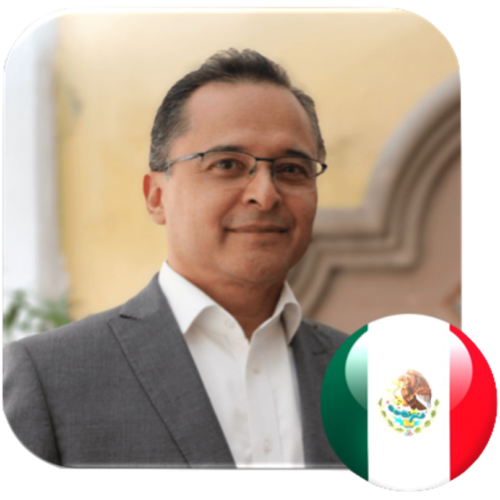
Ignacio Castillo holds a Bachelor’s degree in Electronics and a Master’s degree in Computer Science specializing in Electronic Devices from the Benemérita Universidad Autónoma de Puebla. He is a research professor at the Universidad Autónoma de la Ciudad de México, where he coordinates the Advanced Networks Laboratory. Additionally, he works as a Data Centers Consultant.
He is an IEEE Senior Member and has been a Distinguished Visiting Professor of the IEEE Computer Society, as well as an IEEE Computer Society Golden Core Member. He has worked for 27 years in the computer and telecommunications industry, participating in 110 national and international projects in various roles such as team member, leader, and management positions.
TRENDS ON MICRO AND NANOELECTRONICS
Supported by
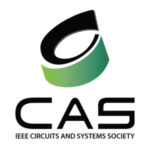
The talk starts with a short presentation of Electronics and Microelectronics evolution. Than it will be presented a set of several trends in the design of micro and nanoelectronics circuits, including architectural issues, variability and sources of variability, EDA tools, physical design issues, printability, design of transistor networks, layout strategies, regularity, 3D circuits, flexible electronics, new devices, Stretchable Silicon, Fault Tolerance, Tolerance to Radiation Effects, … It will be also discussed some trends in the design of IoT devices, where power optimisation is something more and more fundamental. The talk tries to motivate the audience to explore the upcoming challenges in the field.
Free Access to IEEE CASS Members
Dr. Ricardo Reis

Ricardo Reis received a Bachelor degree in Electrical Engineering from Federal University of Rio Grande do Sul (UFRGS), Porto Alegre, Brazil, in 1978, and a Ph.D. degree in Microelectronics from the National Polytechnic Institute of Grenoble (INPG), France, in 1983. Doctor Honoris Causa by the University of Montpellier in 2016. He is a full professor at the Informatics Institute of Federal University of Rio Grande do Sul. His main research includes physical design automation, design methodologies, fault tolerant systems and microelectronics education. He has more than 700 publications including books, journals and conference proceedings. He was vice-president of IFIP (International
Federation for Information Processing) and he was also president of the Brazilian Computer Society (two terms) and vicepresident of the Brazilian} Microelectronics Society. He is an active member of CASS and he received the 2015 IEEE
CASS Meritorious Service Award. He was vice-president of CASS for two terms (2008/2011). He is the founder of the Rio Grande do Sul CAS Chapter, which got the World CASS Chapter of The Year Award 2011, 2012, and 2018, and R9 Chapter of The Year 2013, 2014, 2016, 2017 and 2020. He is a founder of several conferences like SBCCI and LASCAS, the CASS Flagship Conference in Region 9. He was the General or Program Chair of several conferences like IEEE ISVLSI, SBCCI, IFIP VLSI-SoC, ICECS, PATMOS. Ricardo was the Chair of the IFIP/IEEE VLSI-SoC Steering Committee, vice-chair of the IFIP WG10.5 and he is Chair of IFIP TC10. He also started with the EMicro, an annually microelectronics school in South Brazil. In 2002 he received the Researcher of the Year Award in the state of Rio Grande do Sul. He is a founding member of the SBC (Brazilian Computer Society) and also founding member of SBMicro
(Brazilian Microelectronics Society). He was member of CASS DLP Program (2014/2015), and he has done more than 70 invited talks in conferences. Member of IEEE CASS BoG and IEEE CEDA BoG. Ricardo received the IFIP Fellow Award in 2021 and the ACM/ISPD Lifetime Achievement Award in 2022.
DATA ANALYTICS: EMPOWERING INSIGHTS AND INFORMED DECISION-MAKING
This tutorial explores data analytics and its role in empowering insights and informed decision-making. It covers techniques, applications, and real-world examples across industries. By the end of the tutorial, learners will gain a solid understanding of data analytics and its practical application for driving meaningful outcomes. They will be equipped with the knowledge to apply data analytics techniques in their own professional endeavors and make data-driven decisions to achieve better results. Some practical exercises will be carried out for data analysis, creating dashboards in Power BI.
Free Access to IEEE TEMS and IEEE Computer Members
Mg. Ana Rodriguez

Ana Karina Rodríguez is an Electronics Engineer from Santo Tomás University and holds a Master’s degree in Systems and Computing Engineering from the University of Los Andres. She has over 20 years of experience working on data analytics, business intelligence, and Big Data solutions. Currently, she serves as the CEO of ICUBO Solutions, a company specializing in Business Intelligence consulting.
TARIFF STRUCTURE FOR WHOLESALE AND RETAIL ENERGY MARKETS
This tutorial provides insights into tariff structures in both wholesale and retail energy markets. Participants will gain a comprehensive understanding of pricing mechanisms, cost allocation, and rate design strategies. The workshop explores how tariffs impact market dynamics and consumer behavior, offering practical knowledge for optimizing tariff models and promoting efficient energy consumption.
Ing. Raquel Ronderos

Mrs Raquel is a knowledge electrical engineering professional with 13 years of experience as consultant and engineer in Colombia. She has worked as a field engineer for the oil & gas and construction sector, as well as technical consultant for several manufactures, the las 7 years of work experience she has been a consultant for foreign and national investor in the renewable energy sector, providing this companies energy regulatory advisory, project structure according to the local requirements, energy market, PPA, Colombia market players advisory. Mrs Raquel is currently a principal consultant for ERM.
Programming air quality with Python
Air quality is an indicator that allows to evaluate the ecological situation in Colombia, through monitoring devices located throughout the national territory, which measure air quality and other climatological variables. In this tutorial you will learn how to develop a Python program to analyze air quality statistics in Colombia. To do so, we will develop an algorithm capable of creating the matrices of the DANE air quality database, which is publicly available on the web portal datos.gov.co. Finally, you will also learn how to simplify many of the functions and instructions in Python, using the pandas and matplotlib libraries.
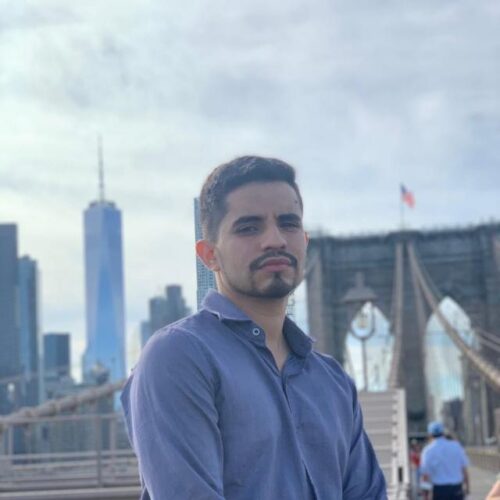
Sánchez-Gómez is a biomedical engineer, lawyer, Master in Education, Master in Public Policy, and PhD(c) in Industrial and Systems Engineering at Universidad de los Andes. He has served as editor in chief of Pharos Journal, professor of the Engineering School and the Education School at Universidad El Bosque, and full professor of OPINA School at Politécnico Grancolombiano. He was a professor of Systems Engineering and pedagogue of educational innovations at Universidad de los Andes; associate professor of Engineering and Sciences School at Universidad Sergio Arboleda; assistant professor of environmental engineering at Universidad de Cundinamarca, and professor of civil and telematics engineering at Universidad Distrital.
DIGITAL TREND FOR CLEAN AND ELECTRIC MOBILITY
Supported by:

As the world accelerates towards a sustainable future, electrical mobility stands at the forefront of transportation revolutions. In this dynamic keynote, we delve into the digital trends that are propelling electric vehicles to new heights. The fusion of deep learning and the Internet of Things (IoT) has paved the way for groundbreaking advancements in electric mobility. From intelligent energy management systems to autonomous driving capabilities, the convergence of these cutting-edge technologies is reshaping the way we envision transportation.
Join us on this electrifying journey as we explore the seamless integration of deep learning algorithms, empowering electric vehicles with enhanced efficiency, safety, and adaptability. Discover how the IoT enables real-time data exchange, optimizing charging infrastructure and providing users with an unparalleled driving experience. As we embrace the digital transformation in electrical mobility, we also address the challenges and potential solutions that lie ahead, paving the road towards a greener, smarter, and more interconnected transportation ecosystem.
MBA. Ravikiram Annaswamy
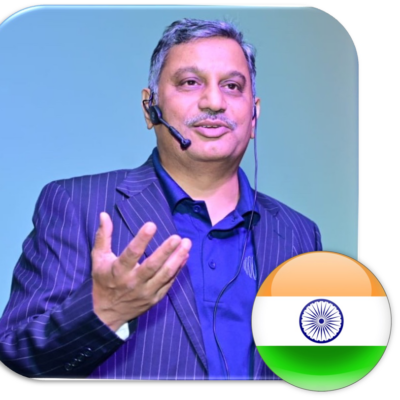
Ravikiran Annaswamy is Founder and CEO of Numocity Technologies. He is incubating various innovative products using analytics and deep learning. His has been business focus is on bringing Electric Mobility to Indian market and has launched various technology products like Fulcharge.com in this space.
He works closely with global programs likeFounders Institute (Fi.Co) and Unreasonable Institute as Mentor and Coach for early stage startups. He is on the global team of IEEE 5G and is responsible for vision & strategy for future applications and services like Tactile/Haptic Internet, IOT, AR, VR Applications.
He has over 23 years of business experience as Entrepreneur and as Business Leader at Nokia Siemens Networks and Siemens AG. He was Business Head for Indian market, led Global Product Management and was General Manager for BSS Solutions. He championed Intrapreneurship by working as Innovation head for Bangalore site of Nokia Siemens Networks.
IOT TO THE RESCUE:
HOW TO FEED A GROWING POPULATION WHILE CONSERVING THE PLANET’S RESOURCES
Supported by

World population is growing and according to FAO (United Nations Food and Agriculture Organization) the agriculture production should increase by 70% by 2050. On the other hand it is also well known that the agricul- ture is dramatically impacting the 9 planetary boundaries defined by Johan Rockström and his group in 2009. So we are facing a big dilemma, how to improve the productivity of the soil without impacting the planet and its limits.
The growth of crops depend on several parameters such as soil moisture, soil temperature, nutrients (fertilizers), soil pH, soil salinity, etc. Without having an on line measurement (real time) of those parameters we will probably be able to get products from the ground, however we are not taking in account what are the impact of what we are doing and the way we are making agriculture. With the appropriate sensors and IoT we are able not only to know the level of the parameters already mentioned but also to act based on the results.
This talk will present an IoT approach to measure relevant parameters for crop growth and health while keeping the planet safe. It will also cover the need and design of edge computing for this kind of IoT application.
Dr. Victor Grimblatt

Victor Grimblatt has an engineering diploma in microelectronics from Institut Nationale Polytechnique de Grenoble (INPG – France) and an electronic engineering diploma from Universidad Tecnica Federico Santa Maria (Chile). He got his PhD on Electronics in 2021 from University of Bordeaux. He is currently R&D Group Director and General Manager of Synopsys Chile. He has expertise and knowledge in business and technology and understands very well the trends of the electronic industry; therefore, he is often consulted for new technological business development.
He has published several papers in IoT, EDA and embedded systems development, and since 2007 he has been invited to several international conferences to talk about Circuit Design, EDA, IoT, and Embedded Systems. Since 2012 he is chair of the IEEE Chilean chapter of the CASS. He was President of the Chilean Electronic and Electrical Industry Association (AIE) from 2017 to 2021. He has been part of several conferences TCP (ISCAS, ICECS, LASCAS). He is member of the IEEE CAS Board of Governors for the period 2021 – 2022. He chairs the Electronics for Agrifood SIG at CAS. He was Chair of LASCAS Steering Committee from 2018 to 2022. Victor’s research areas are EDA (Electronic Design Automation), and Smart Agriculture applying Machine Learning, Artificial Intelligence, and IoT.
TECHNICAL ASPECTS IN THE ENERGY TRANSITION: TOWARDS A SUSTAINABLE FUTURE
In this keynote, we examine the essential technical aspects driving the energy transition towards a sustainable future. The focus will be on the decarbonization of thermal power plants, highlighting innovative technologies such as carbon capture and storage (CCS) to reduce their carbon footprint. Additionally, we will explore the integration of renewable energies in these plants to achieve cleaner and eco-friendly power generation. The presentation will address the technical challenges and opportunities that arise in this transition, emphasizing the need for collaboration across sectors to achieve a more sustainable and environmentally friendly energy future.
Mg. Andrés Yabrudy

Electrical engineer with a Master’s in Business Administration (MBA) and studies in mechanical engineering and finance, among others. With 30 years of experience in the energy sector, specializing in areas such as electrical systems planning, power plant operation, energy regulation and economics, energy and fuel markets, generation projects, mining project development, renewable energy sources, and business management.
Engaged in academia, serving as a keynote speaker at specialized national and international energy and fuel events and authoring various publications.
Has held different executive positions in the electrical sector.
In recent years, has led the structuring, construction, and commissioning of the 437 MW GECELCA 3 power plant, involving an investment of $680 million dollars, as well as overseeing the coal mining project Las Palmeras, which commenced operations this year.
INTEGRATION OF RENEWABLES AND NEW ENERGY MARKETS
Energy transition is the current aspect that drives the expansion of world electrical matrix. This can be addressed in two ways: i) deployment of renewable energy sources and, ii) use of new technologies (like CCUS, for example). Renewable energy, most from solar photovoltaics (pv) and wind are invertor-based sources, which means that these sources do not have inertia, unlike traditional sources that use synchronous machines, and in which energy markets have been consolidated until today. So, this situation brings a operational challenge to Systems Operators (TSOs) worldwide: it is becoming more difficult to keep the balance between supply and consumption. To address this situation, energy markets are adopting mechanisms in which this situation can be optimized, allowing corrective actions (when need) by TSOs. The objective of this talk is to present international experience and state of the art in how energy market models are addressing this operational challenge, optimizing the renewable sources´ integration into the electrical system and granting the flexibility and resilience that this brave new era on electrical power system demands.
Mg. Jovanio Santos
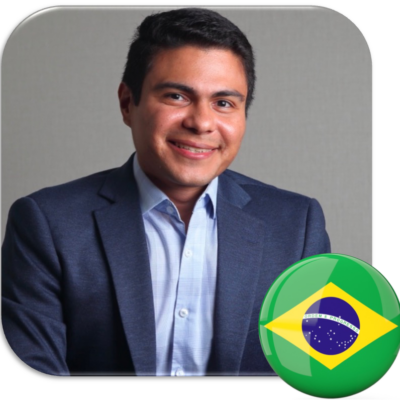
Experience in designing and installing energy systems and public utility networks (water and compressed air) in construction shipyards. I also have experience in telecommunications systems, design, and installation. MBA in Project Management from the Getulio Vargas Foundation (FGV), and a postgraduate degree in Energy Efficiency from the Lutheran University of Brazil (ULBRA). Published several articles, both nationally and internationally, at conferences organized by the International Institute of Electrical and Electronics Engineers (IEEE), related to Electric Power Systems (EPS), transmission line sizing, simulation, and measurement of electromagnetic fields. I am part of the article review committee of this same organization. Member of the Project Management Institute (PMI) and certified as a Project Management Professional (PMP). Experience in developing value analysis and budgeting for mechanical operation in construction projects and designing maintenance teams.
DIGITAL TRENDS FOR THE DIAGNOSIS OF COGNITIVE IMPAIRMENT PATHOLOGIES.
Parkinson’s disease (PD) is the second most prevalent neurodegenerative disease worldwide, after Alzheimer’s disease (AD). It is estimated that the number of people living with this disease will double between 2015 and 2040, from 6.2 million to 14.2 million patients. The pathological aging processes produced by any of the neurodegenerative diseases increase the risk potential to present falls, these being the main cause of fatal and non-fatal injuries in the elderly. Patients with PD, depending on the stage, clinical subtype and the time of evolution of the disease, can suffer different types of complications, directly related to motor and non-motor complications and others related to the compromise of some systems such as the cardiovascular, autonomic and cognitive changes. These conditions increase the risk of falls, systemic complications, and hospitalizations. The spectrum of complications derived from falls varies from small injuries to complex fractures, head trauma with or without intracranial hematomas with high direct and indirect costs derived from health care, as well as loss of functionality for patients with additional costs for systems and families.
The use of technologies applied to health from telemedicine systems, such as the use of objective technological measurements using mobile apps, as well as the use of depth cameras, accelerometers or inertial units for the objective characterization of gait have allowed a complementary characterization to conventional medical care using low-cost devices even in areas of difficult access. This keynote describes the advances in the development of portable gait analysis systems and signal processing algorithms for the analysis and monitoring of the most important gait variables, both at the ankle and wrist level, as well as applications that support the analysis of cognitive impairment and patient monitoring. The system described makes it possible to extract important variables such as the coefficient of asymmetry (ASA), which is an early indicator of PD, and aims to help estimate the risk of falls in patients with PD and AD. The system is based on the use of low-cost depth cameras, such as Microsoft Kinect, Orbbec Astra, or Intel Realsense, and signal processing algorithms based on wavelet transform, peak analysis, and Machine Learning techniques. The system has been validated over four (4) years with nearly 180 patients and 80 controls at Fundación Valle del Lili and in brigades in different cities of Colombia.
Dr. Andres Navarro
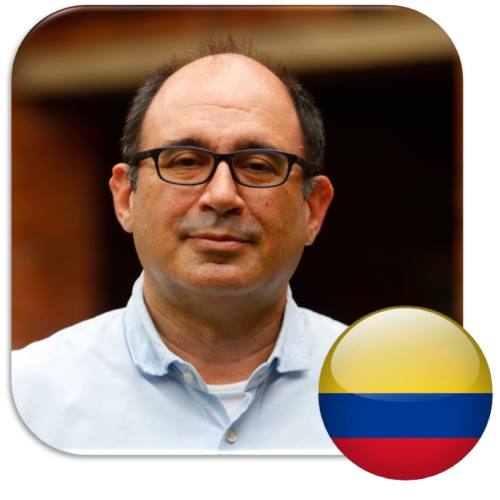
Andres Navarro is an Electronic Engineer, with a Master on Technology Management, both from Universidad Pontificia Bolivariana in Medellín. Obtained his PhD in Telecommunications from Universitat Politécnica de Valencia. He is IEEE Senior Member, advisor of the Spectrum Management Committee for Colombian Spectrum Agency and ITU expert. Currently is the IEEE Comsoc Colombia Chapter Chair. As ITU expert, advised different governments in Digital TV and Spectrum Management. Is a participant on COST Action CA15104 IRACON and former actions COST IC1004 and COST 2100.
He is member of IEICE and EurAAP. Participated in the design of Icesi Master program in Telecommunications and Informatics, as well as in the CDIO curriculum design process and ABET process in the engineering school. Currently is the coordinator of the PhD program on engineering. He is Director of the i2t research group at Universidad ICESI. His research interests are Spectrum Management, mobile radio planning, radio propagation and m-health.
In academia, he has been lecturer and currently a full professor in Universidad Icesi, combining teaching and research activities. He has served as TPC member of different IEEE conferences like PIMRC, VTC, Latincom and FIE. TPC member and Board member of IEEE Colcom since the first version in 2009 as well as chairman of IEEE Colcom in three occasions and TPC chair of IEEE Healthcom 2019. He is also a member of the Head Committee of the International Center “Global Innovation Exchange on Virtual Reality and Visualization” to America and Asia.
AGROTECH: PAST, PRESENT AND FUTURE
The keynote begins with a brief introduction on the importance of technology in agriculture and how it has evolved over time. This is followed by a historical contextualization of agriculture and its relationship with technology, as well as a description of the limitations and challenges that farmers faced in the past. To address the present, various techniques are discussed, including precision agriculture, which provides a detailed explanation of how it has revolutionized crop management. It covers the use of sensor networks and advanced technologies to collect real-time data on soil conditions, climate, and other relevant factors. The analysis of this data provides accurate information on crop needs, leading to increased production efficiency, cost reduction, and minimized environmental impact. The keynote also explores intelligent monitoring, explaining how it enhances crop supervision and control. It involves the use of technologies such as the Internet of Things (IoT) to obtain real-time information on crop status, enabling early detection of issues like diseases or pests and allowing for prompt and precise actions to minimize damage and ensure crop health.
Regarding the future, emerging trends in AgTech are examined, including the impact of artificial intelligence and machine learning applied to agriculture, the integration of drones and robotics in farm management, the application of blockchain for traceability and food safety, and the development of vertical farming and urban agriculture systems.
The presentation is expected to include case studies that exemplify the concepts discussed, such as soil nutrition monitoring systems, monitoring of climate variables, and production counting in various crops using IoT. The conclusion summarizes the presented technological advancements and their impact on agriculture, reflecting on the potential of AgTech to improve efficiency, sustainability, and productivity in farming.
Dra. Monica Huerta
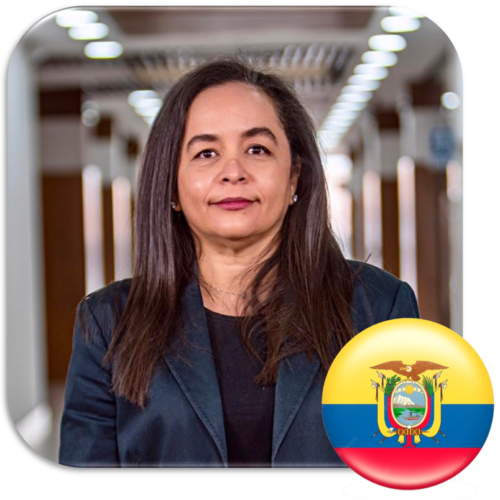
Mónica Karel Huerta holds a Ph.D. degree in Telematics Engineering, which she obtained in 2006 from the Polytechnic University of Catalonia (UPC) in Barcelona, Spain, with the distinction of Sobresaliente Cum Laude. Prior to that, she received a Master’s degree in Biomedical Engineering in 1999 and a degree in Electronic Engineering in 1994, both from Simón Bolívar University (USB) in Caracas, Venezuela. She completed two postdoctoral research stays between 2008 and 2010, one at Universidad Veracruzana in Xalapa, Mexico, and the other at UPC.
Throughout her career, Mónica has held various esteemed positions. At USB, she served as a Full Professor, Dean of Postgraduate Studies, and Coordinator of the Ph.D. program in Engineering, as well as the specialization in Telematics Engineering. She also worked as a researcher at the University of the Armed Forces – ESPE in Latacunga, Ecuador, from 2013 to 2014, and at the Salesian Polytechnic University (UPS) in Cuenca, Ecuador, from 2014 to 2017, under the PROMETEO program of SENESCYT, Ecuador. Currently, she holds the position of Principal (Full Professor) at UPS.
Mónica is a Senior Member of the Institute of Electrical and Electronics Engineers (IEEE) and a member of several IEEE Societies, including Communications, Engineering in Medicine and Biology (EMBS), Technology and Engineering Management, Electron Devices, and Antennas and Propagation. She has actively contributed to the IEEE community, serving as the Chair of IEEE EMBS Ecuador from 2017 to 2018, Chair of Membership of the IEEE Ecuador Section from 2018 to 2019, Vice President of the IEEE Section Ecuador from 2020 to 2021, and currently as the President of the IEEE Ecuador Section for the period 2022-2023.
Mónica’s research interests lie in the areas of Internet of Things, Wireless Networks, Sensor Networks, Telemedicine, and Remote Monitoring. She has an extensive research portfolio, having directed and participated in over 27 research projects. Additionally, she has published more than 180 articles in national and international journals and conferences, showcasing her contributions to the field.
Data Science for Cybersecurity: An Overview Focused on Networking
Supported by:

This overview provides insight into the application of Data Science in the realm of cybersecurity, with a specific emphasis on networking. The increasing complexity and volume of network data have prompted the integration of Data Science techniques to enhance threat detection, prevention, and response mechanisms. By analyzing network traffic patterns, anomalies, and behavioral trends, Data Science plays a pivotal role in identifying and mitigating cyber threats. This paper explores the synergy between Data Science and cybersecurity within the networking domain, highlighting key concepts, methodologies, challenges, and potential future developments. It aims to provide a comprehensive understanding of the evolving landscape of Data Science for cybersecurity in the context of networking.
Michelle Nogueira

Michele Nogueira is an Associate Professor in the Computer Science Department at Federal University of Minas Gerais (UFMG), Brazil. She received her doctorate in Computer Science from the University Pierre et Marie Curie – Sorbonne Université, France. She was on a sabbatical leave at Carnegie Mellon University, USA (2016-2017). Her research interests include wireless networks, network security and dependability. She has worked on providing resilience to self-organized, cognitive and wireless networks by adaptive and opportunistic approaches. Today, her research focuses on creating network security intelligence supported by data science. Dr. Nogueira was one of the pioneers in addressing survivability issues in self-organized wireless networks, being the work “A Survey of Survivability in Mobile Ad Hoc Networks”, one of her prominent scientific contributions. She has been a recipient of Academic Scholarships from Brazilian Government in her undergraduate and graduate years, and of international grants such as from the ACM SIGCOMM Geodiversity program. She served as Associate Technical Editor for the IEEE Communications Magazine. She served as chair for the IEEE ComSoc Internet Technical Committee. She is an ACM and IEEE Senior Member.
PERSPECTIVES OF ENERGY TRANSITION IN LATIN AMERICA
The panel on «Perspectives of Energy Transition in Latin America» explores the shift towards sustainable energy sources in the region. Experts discuss challenges, opportunities, and strategies for a successful transition. Topics include renewable energy policies, investment opportunities, technology advancements, and collaboration between government and private sectors. Attendees gain insights into the energy transition landscape in Latin America and leave with valuable knowledge for promoting sustainable practices in the region. In the panel will feature experts representing the public sector, the productive sector, and the academic sector.
Moderator
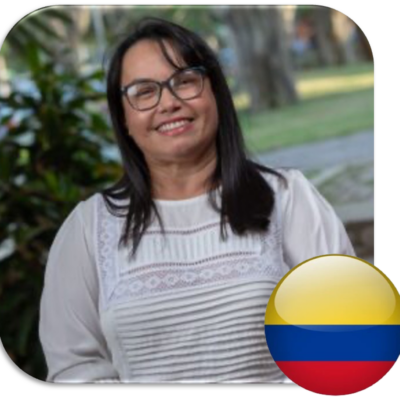
Ingrid Oliveros is an Electrical Engineer from the University of the North, Master’s degree in Electrical Engineering from the University of Los Andes, Doctorate in Electrical Engineering from the Polytechnic University of Madrid. Experience in electricity markets, non-dispatchable energy generation systems, and dynamic and stable analysis of electrical systems. Currently, she is a Professor in the Department of Electrical and Electronics Engineering at the University of the North.
Panelist
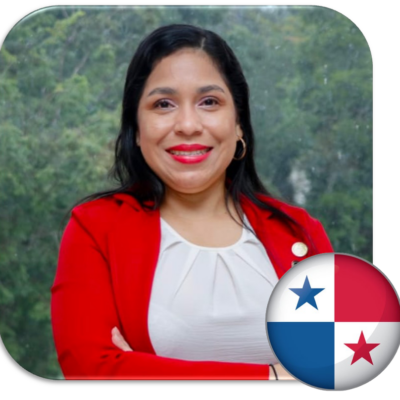
Jessica Guevara holds a Bachelor’s degree in Electrical and Electronics Engineering from the Universidad Tecnológica de Panamá and a Doctorate from the Universidad de Chile. She is a research professor at the Technological University of Panama, where she serves as the Director of the Electrical and Electronics Engineering program

Jovanio Santos is a Bachelor of Electrical and Electronics Engineering from the Federal University of Rondonia, a Master in Business Administration from the Getulio Vargas Foundation, and a Master in Power Markets and Regulatory Affairs from the Polytechnic School of USP. He has over 10 years of experience in the energy markets sector. Currently, he is the Strategic Leader at Thymos Energia.

Diana Pérez is an electrical engineer from the National University, with a Master’s degree in Electrical Engineering from the University of los Andes, and a Master’s degree in Applied Economics from EAFIT University.
With over 12 years of experience in the electrical sector, in organizations such as SSPD, UPME, and at XM (for the last 7 years), working within the Wholesale Energy Market Management (MEM) division. Development areas: energy policy and regulation for sustainable market design, short-term markets such as intraday and ancillary services, power system analysis and planning, tariffs, regulation and competition, auctions, energy contracts, FERNC, DER, storage, and energy transition.
PERSPECTIVES OF ENERGY TRANSITION IN LATIN AMERICA
The panel on «Smart Cities: Emerging Threats and Objectives for 2030» delves into the evolving landscape of urban development, focusing on the challenges and goals associated with the advancement of intelligent urban environments. Experts will analyze potential risks, discuss innovative solutions, and outline strategic objectives to ensure the successful evolution of smart cities. Topics to be explored include cybersecurity threats, infrastructure resilience, data privacy considerations, and the integration of emerging technologies. The panel will feature experts from governmental bodies, industries, and academic institutions, providing a comprehensive perspective on the multifaceted aspects of smart city development. Attendees will gain valuable insights into the future of urban living and leave equipped with knowledge to contribute to the realization of smart and resilient cities by 2030.
Moderator
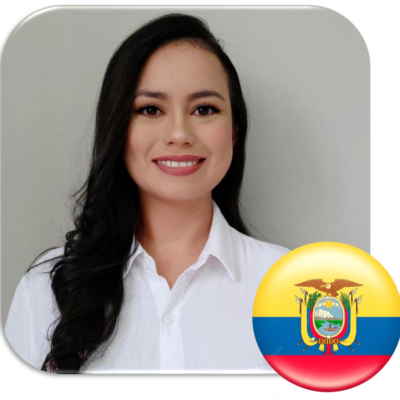
Alejandra Orellana is an Electronics Engineer from the Escuela Politécnica del Litoral (ESPOL) and holds a Master in Executive Business Management with a mention in Innovation from the Graduate School of Administration of the Litoral (ESPAE). She works as a Director at the company Madedropec and serves as the President of the IEEE Technology and Engineering Management Ecuador Chapter.
Panelist
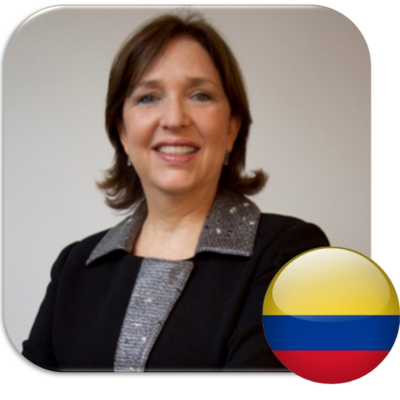
María Mejía Jaramillo is a Systems and Computing Engineer from the Universidad de Los Andes and holds a specialization in Strategic Management of Informatics from the same institution. With over 30 years of experience in the information technology and communications sector, she has worked in both public entities and private companies, as well as academia. She served as the Deputy Minister of Information Technologies at the Ministry of Information Technologies and Communications. Currently, she works as a Senior Executive in the Digital Transformation Directorate within the Government sector at the Banco de Desarrollo de América Latina – CAF.
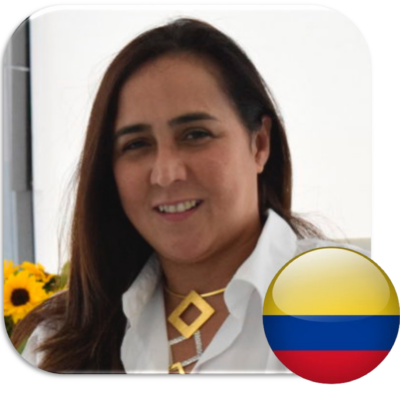
Virna Campanella is a Business Administrator with a Master’s in Business Administration, a Specialization in Marketing, and a Specialization in Digital Transformation from the Universidad del Norte. She is an entrepreneur and a founding partner of CONTACTA, a company that provides high-value-added services to specialized sectors, supporting development through knowledge-based, innovative, and DIGITAL TRANSFORMATION services. CONTACTA operates from Barranquilla and serves clients in Colombia, Panama, Central America, the United States, Spain, and Peru.
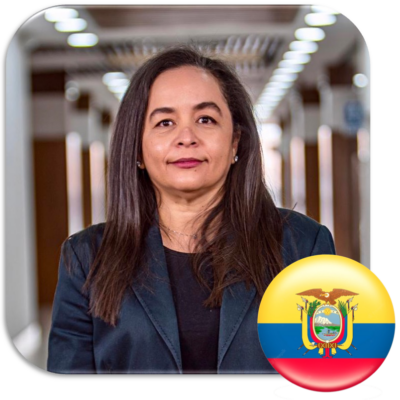
Mónica Karel Huerta holds a Ph.D. degree in Telematics Engineering, which she obtained in 2006 from the Polytechnic University of Catalonia (UPC) in Barcelona, Spain, with the distinction of Sobresaliente Cum Laude. Prior to that, she received a Master’s degree in Biomedical Engineering in 1999 and a degree in Electronic Engineering in 1994, both from Simón Bolívar University (USB) in Caracas, Venezuela. She completed two postdoctoral research stays between 2008 and 2010, one at Universidad Veracruzana in Xalapa, Mexico, and the other at UPC.
IEEE Colombian Caribbean Conference (C3) is the Biannual Technical and Scientific Conference of the IEEE Colombian Caribbean Section, that brings together IEEE professionals and scientists from Colombia and Latinamerica. The 2023 edition of this IEEE international event will be held in the Universidad del Norte at Barranquilla, Colombia. C3 2023 is an opportunity for professional members, academics, researchers, and industrialists to meet and present the developments and technological advances. IEEE C3 2023 will be held in person and virtual on November 22-25 2023 in Barranquilla, Colombia.
We invite you to be part of the Colombian Caribbean Conference (C3) as a Sponsor and Be Part of the Future! As a sponsor of C3, you will not only gain exceptional exposure to a diverse audience, but you will also become an agent of positive change. Your brand will be at the forefront of innovation and will be associated with the progress that will transform entire communities. Join us in this exciting journey and be part of the transformation in the Colombian Caribbean!

THEORETICAL AND PRACTICAL TOPICS IN AREAS
-
-
-
-
-
- Circuit and systems
- Communications
- Computer
- Computational Intelligence
- Educational
-
-
-
-
-
-
- Engineering in Medicine and Biology
- Geoscience and Remote Sensing
- Power and Energy
- Robotics and Automation Systems
- Technology and Engineering Management
-
7 Keynote Speakers
4 Tutorials
2 Panels
+ 150 Papers
+200 participants
The Colombian Caribbean Conference (C3) invites you to be part of an event that will set the tone in the region. With the convergence of brilliant minds and prominent leaders, C3 stands as a fertile ground for innovation and growth in the Colombian Caribbean. As a sponsor, you will have the opportunity to enjoy prominent visibility at all stages of the event, from pre-promotion to active participation in the conference. In addition to positioning your brand in an environment of excellence, you will also be contributing directly to the development and strengthening of education and innovation in the region. Join us on this journey towards a promising future as we unleash the potential of the Colombian Caribbean in the Colombian Caribbean Conference (C3).


ORGANIZED BY:
SUPPORTED BY:
Golden Sponsors:

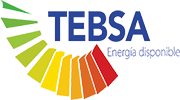
Plate Sponsors:

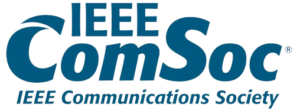
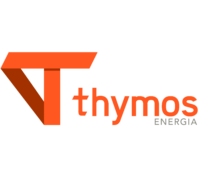
Bronze Sponsors:





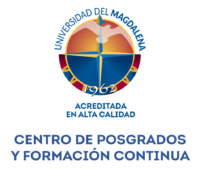
© Copyright 2023 IEEE – All rights reserved. Use of this website signifies your agreement to the IEEE Terms and Conditions. A not-for-profit organization, IEEE is the world’s largest technical professional organization dedicated to advancing technology for the benefit of humanity.




